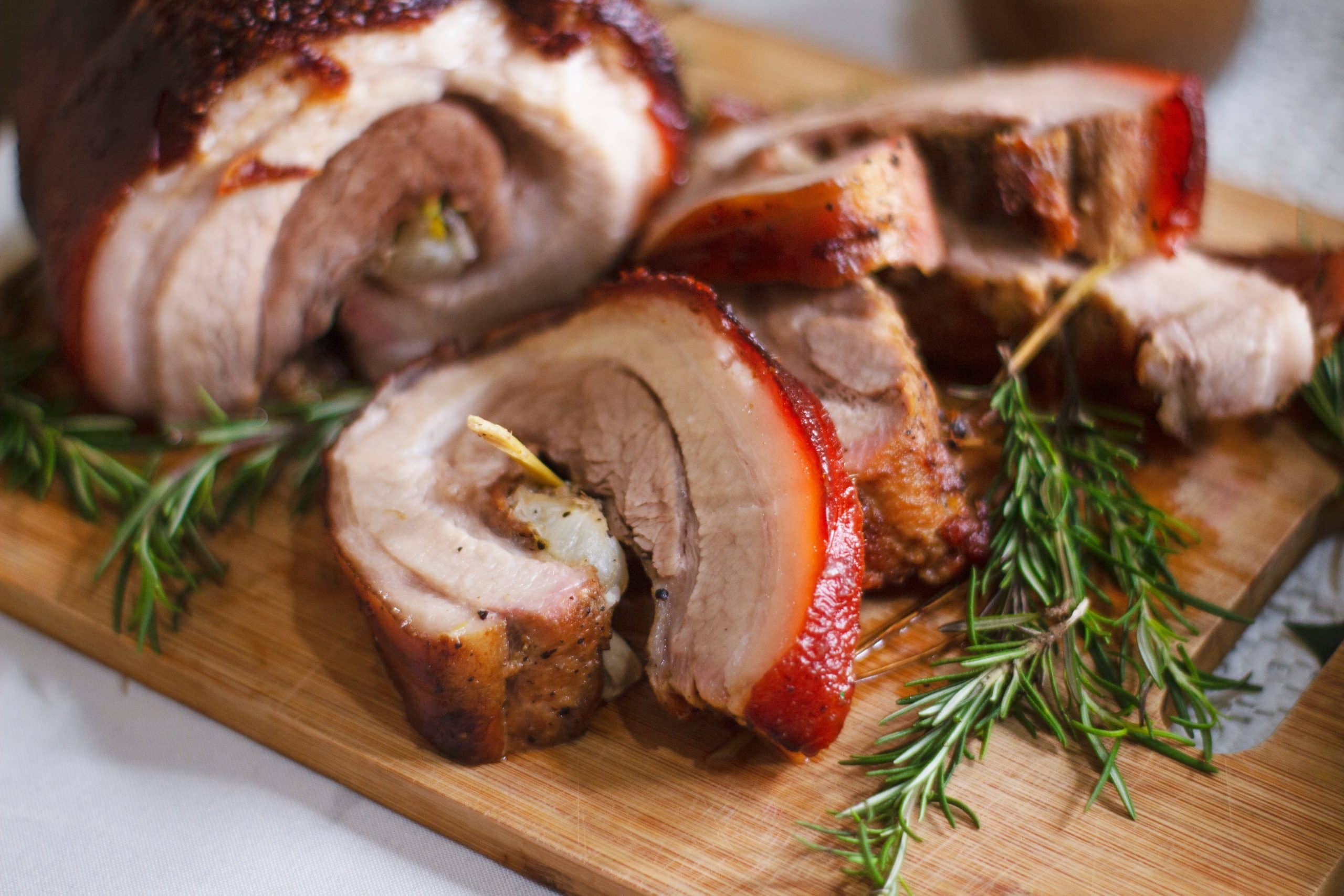Pork, the star of many a Sunday roast, is a family favorite for a reason. It’s versatile, hearty and when cooked well, delivers a unique melding of flavors that tickle the tastebuds. Among all pork dishes, roast pork holds a special place as it brings together the succulence of the meat and the tantalizing crunch of the crispy skin, creating a deeply satisfying treat for both the eyes and the palate.
But achieving the desired crispiness for the pork skin while keeping the meat tender and juicy can be quite the culinary challenge. To help you master the art of roasting pork to perfection, we delve deeper into the factors that can make or break your roast pork recipe. We will look at the crucial role of the oven, the importance of salt, the handling of the belly cut, and the magic of sauces, among other elements.
In parallel : Tips for healthy and balanced cooking
The Powerful Role of the Oven in Roasting Pork
The oven plays an undeniably essential role in roasting pork. Its steady heat and controlled environment contribute significantly to how well your pork belly will be cooked. Roasting at the right temperature is crucial to yielding that mouth-watering, crispy skin, while also ensuring that the meat is cooked through.
To achieve the perfect roast, a two-step temperature process is recommended. Initially, a high-temperature blast will help to create the initial layer of crispness on the skin. This should be followed by a decrease in temperature to allow the meat to cook slowly, which will ensure that it remains moist and tender.
Topic to read : What are the essentials of crafting a perfect tart?
Understanding your oven’s unique characteristics can also make a difference in the final result. Every oven behaves slightly differently, so it’s essential to adjust your cooking time and temperatures according to your oven’s specific traits.
Salt: The Secret Ingredient for Crispy Skin
Next comes the power of salt. Salt is a simple ingredient, often overlooked, but it holds the key to achieving that coveted crispy skin on your roast pork. The salt draws out the moisture from the skin, a crucial step as dry skin will become crispy when roasted, and the salt also helps to break down the fat under the skin, resulting in a more flavorful meat.
Before you begin roasting, pat the pork belly dry and rub a generous amount of salt over the skin, ensuring it gets into all the scored lines. Let it rest for a few minutes to allow the salt to perform its magic, then brush off the excess before popping your pork into the oven.
The Importance of Choosing and Handling the Belly Cut
No matter your skill level in the kitchen, the cut of meat you choose will significantly impact the results of your roast pork. A good piece of pork belly is ideal for roasting. This cut of meat has layers of fat that will melt during the cooking process, leading to moist, tender meat and crispy skin.
When preparing your pork belly, make sure to score the skin. This involves making shallow cuts on the skin without slicing into the meat. Scoring not only makes the skin crispier but also allows the fat to render and the flavors to penetrate deeper into the pork.
The Art of Making Crackling
The crowning glory of any roast pork is undoubtedly the crackling. The delightful sound it makes when bitten into is music to the ears of any pork roast aficionado. The secret to excellent crackling lies in the preparation. The pork skin needs to be utterly dry before roasting. After salting the skin, leave the pork uncovered in the refrigerator overnight. This process will dry out the skin and pave the way for that irresistible crackling.
During roasting, keep a careful eye on the skin. If it’s not puffing up or becoming crispy, you may need to increase your oven’s temperature. Remember, patience and vigilance pay off when it comes to perfect crackling.
From Pan to Gravy: The Finishing Touches
Now that you’ve mastered the meat, it’s time to turn your attention to the accompanying gravy. The gravy is not merely a sauce; it’s an extension of the roast itself, enhancing its flavors and turning a good roast into a great one.
Start with the pan juices left from roasting the pork. These juices are packed with flavors from the pork and the seasonings. Combine them with a little flour and stock, and cook until you have a rich, thick gravy. The gravy should be glossy and pourable, with a balance of sweet and savory flavors that complement the pork.
Remember, a good roast is more than just the meat. It’s also about balance — balancing the rich, fatty meat with the clarity of the gravy, the soft, tender meat with the crispy skin, and the depth of the roasted flavors with the freshness of your side dishes. When all these elements come together harmoniously, you will have a pork roast that is truly a feast for the senses.
The Pleasure of Adding Apple Sauce to Roast Pork
One of the most delightful combinations in the culinary world is that of roast pork and apple sauce. The tangy sweetness of the apple sauce marvelously complements and cuts through the richness of the pork, creating a balance of flavors that elevates the entire meal. Plus, it adds a nice pop of color to your plate!
Making homemade apple sauce is quite simple and well worth the effort. All you need are apples, sugar, water and a little bit of lemon juice for added brightness. Peel and chop the apples, combine all the ingredients in a pan, and cook until the apples are soft. Then, blend or mash the mixture until you achieve the desired consistency. A chunkier sauce can add a nice texture to your plate, but a smoother sauce will offer a more refined experience.
Apple sauce isn’t just a side dish, it’s a component that brings out the full potential of your roast pork. It’s the sweet to the savory, the smooth to the crispy, and the fresh to the rich. So the next time you roast a pork belly or pork shoulder, don’t forget the apple sauce. It’s the cherry – or rather, the apple – on top of a perfect pork roast!
Create a Perfect Pork Roast: The Final Words
Creating the perfect roast pork with a crispy crackling skin takes time, patience, and a good grasp of a few key techniques. It all begins with choosing a quality cut of meat, preferably a pork belly or pork shoulder, which has a good layer of fat for flavor and moisture.
Correctly preparing the pork skin is paramount. Scoring the skin to create a grid-like pattern and thoroughly rubbing it with salt not only makes the skin crispier but also enhances the overall flavor of the roast. Additionally, leaving the scored and salted pork uncovered in the refrigerator overnight can significantly improve the crispiness of the skin.
Understanding your oven and how it cooks is also crucial. A two-step roasting process – starting with a high-temperature blast followed by a slow, low-temperature roast – can yield a moist, tender roast with a crispy skin.
To complete your perfect roast pork, don’t overlook the gravy and the apple sauce. The gravy, made from the pan juices, is a flavor-packed accompaniment, while the tangy-sweet apple sauce provides a refreshing contrast to the richness of the pork.
In the end, remember that good cooking is all about balance. A perfectly cooked roast pork should be balanced in flavors, textures, and even colors. So, experiment, tweak, and most importantly, enjoy every step of the process. After all, the joy of cooking is not just in the eating, but also in the making. Happy roasting!











